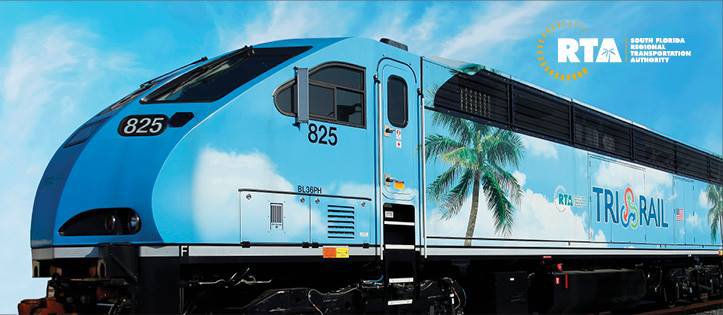
Tri-Rail and Brightline are now in a public finger-pointing match after reports emerged that Tri-Rail has not formatted its trains to fit at a new Miami station built by Brightline.
Tri-Rail has argued Brightline’s construction decisions were the source of the problem and that the entire station may need to be redone. Brightline had previously declined to comment publicly. But on Wednesday, Brightline revealed a letter sent to Tri-Rail leadership arguing a simpler fix to the train cars would ameliorate the problem and questioning Tri-Rail’s actions.
After news broke about the issues surrounding the train car fit, Tri-Rail leadership tried placing the blame on Brightline’s build of the station. Executive Director Steve Abrams — who leads the South Florida Regional Transportation Authority (SFRTA), which serves the Tri-Rail board — made those comments to the Miami Herald.
“We did have an oversight role,” Abrams said. “But we’re not pouring the concrete.”
Abrams added, “I can assure the public, we are working diligently on these fixes. They are complicated and costly. They are not the fault of Tri-Rail.”
But in a letter to Abrams sent Tuesday, and released Wednesday, Brightline President Patrick Goddard said the Tri-Rail’s trains — or rolling stock — were at fault.
“We believe that the most significant impediments to the start of SFRTA service into MiamiCentral Station are issues related to the rolling stock, not the physical plant of the station.”
The project has already faced delays over the years since a 2015 agreement launched the initiative. Brightline built the Miami station as part of a public-private partnership where local Miami-Dade County governments put in $43 million to help pay for the $70 million project. Brightline paid for the remainder.
Brightline’s letter argues both parties had been aware of the fit issues dating back to April of this year. At issue is the platform, which is not wide enough and would chip steps on the outside of Tri-Rail’s cars. The letter states that adjustments to those steps on the train cars are the easier fix and questioned why Tri-Rail had not made accommodations in the months since the issue was first identified.
“We understand and acknowledge that, as constructed, there are clearance envelope intrusions that we must resolve,” the letter read.
“As you and I discussed last May, we believe, and you and your engineering team concurred, that the most logical, expeditious and non-destructive solution to remedy this conflict would be for SFRTA to make slight modifications to the step structure in order to accommodate the variance within the Station.”
“Brightline acknowledges our obligation to remedy the imperfection and the Brightline engineering team continues to stand ready to work with SFRTA to develop and implement a solution to the clearance issue,” the letter continues.
Tri-Rail is further raising questions as to whether the platform’s ramp — also known as a “viaduct” — can hold the weight of the trains. But Brightline says the method Tri-Rail is using to raise questions over that issue is flawed.
“The majority of passenger rail systems in the United States run on tracks which are also used by freight railroads. The viaduct at MiamiCentral Station is unique, in that it does not and cannot support freight rail operations,” the letter reads.
Nevertheless, Brightline claims Tri-Rail is relying on an analysis judging the viaduct’s ability to hold freight trains, which are heavier than passenger trains. Instead, Brightline’s statement says the company used a similar analysis used to judge passenger routes in California and the European Union.
“Our engineering team has confirmed that the structural designs undertaken by Brightline for the station structures are appropriate and consistent with current analogous industry practice and that the structures are acceptable for use with both Brightline’s and SFRTA’s intended loads.”
The letter also states the firm raising questions about the load capacity, Railroad Consultants, previously approved Brightline’s design and is now reversing course by raising questions.
And Brightline further pointed the finger back at Tri-Rail, arguing the company’s trains did not have proper safety measures installed and were not yet compliant with federal environmental standards. Both issues could cause further delays in the opening of the station.
